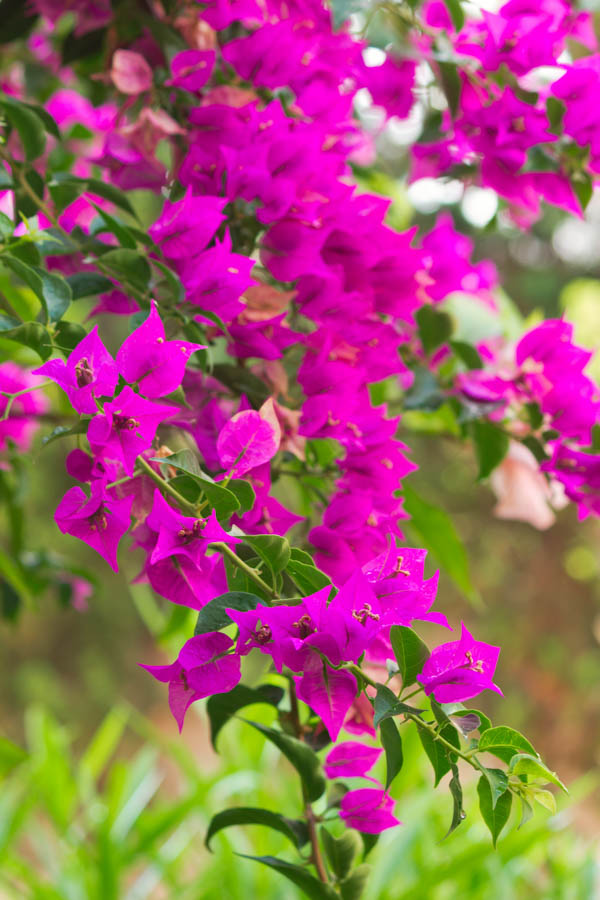Bougainvillea: An Ideal Plant For Hot Mediterranean Areas

Picture a large, magenta bougainvillea draping over the red tile roof of a Spanish style home on a cloudless, sunny day—the essence of Southern California. But it might surprise many to know that bougainvillea is native not to California or even North America, but to South America, specifically Brazil to Peru and a portion of southern Argentina.
What makes this evergreen plant so appealing to gardeners around the world is the profusion of colorful bracts, modified leaves often mistaken as petals. These bracts appear in an array of colors including pink, purple, magenta, white, yellow, orange, and red. The true flower is actually small, white and inconspicuous, and nestled within the colorful bracts which serve to attract pollinators such as hummingbirds, butterflies, and other insects.
These South American native evergreen plants thrive areas with hot summers and mild winters. They need at least five hours of direct sunlight every day: the more sun the plants receive, the more colorful the bracts they produce. Bougainvilleas are sensitive to frost; if you live in an area that receives occasional frost, locate bougainvillea in relatively warm, protected area. Bougainvilleas cannot withstand regular frost. Once established, bougainvillea is among the most drought tolerant of plants. Bougainvilleas want well-draining, slightly acidic soil with a pH of between 5.5 and 6.5.
But beware: choose your bougainvillea variety carefully. Healthy, happy bougainvillea plants can take on aggressive qualities, climbing over trees, fences and other structures and toppling those not designed to support their weight. Gardeners should plan to prune bougainvilleas aggressively to ensure that their plants stay in the desired space.
GardenZeus has comprehensive, customized growing information by plant and zip code. To get started, enter your zip code here.
For other plants suitable for warm or hot Mediterranean climates read:
Getting Started With California Poppy
Baby Blue Eyes: The Versatile California Wildflower
Sky Lupine: A Lovely California Native Wildflower
